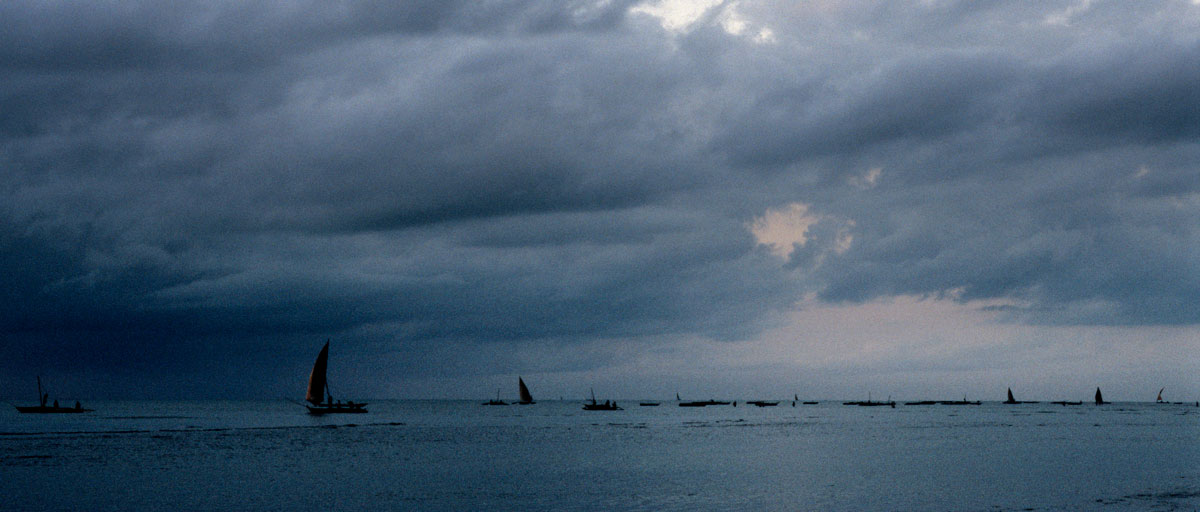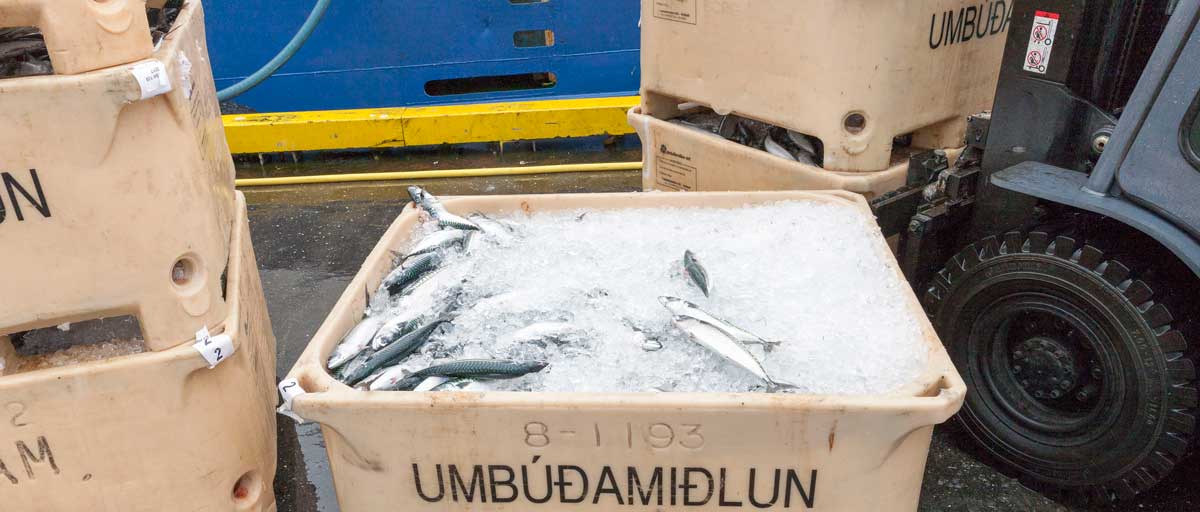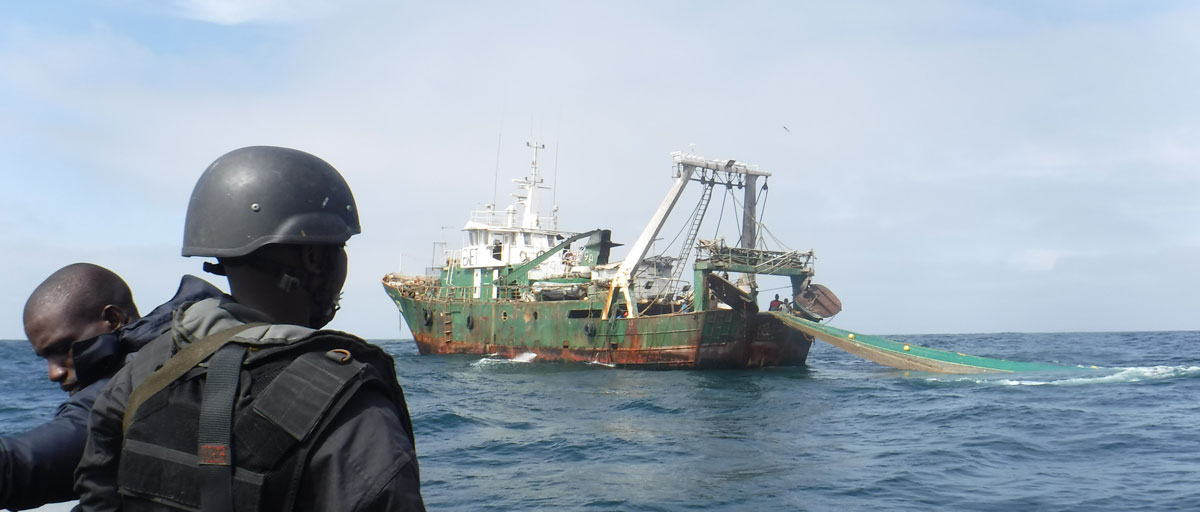
New Science paper warns policymakers that climate change dramatically increases the potential for conflicts over fish to erupt. To deal with this, they must develop policies that are less static and more adaptive to fluctuating fish stocks. Photo: R. Kautsky/Azote
Bildtext får vara max två rader text. Hela texten ska högerjusteras om den bara ska innehålla fotobyline! Photo: B. Christensen/Azote
ocean governance
Cooling heated fish wars
Overfishing, fractured international relationships and political conflicts loom as fish migrate more unpredictably because of climate change. Here is how to deal with it.
• Paper published in Science looks at how climate change could drive ‘fish wars,’ and how policy needs to anticipate these shifts
• Study produced scenarios based on different greenhouse gas emissions scenarios of how many fish stocks could enter new Exclusive Economic Zones (EEZ) in 2100
• Authors call for more widespread cooperative management as one of the means to mitigate future conflict over fish resources
It is old news that climate change will continue to impact our planet. Growing seasons for crops have shifted, unexpected weather patterns have emerged, and entire ecosystems have changed. In spite of these changes, we need to adapt and transform how we manage and govern our resources, but also anticipate changes as a way to avoid future conflict.
Fisheries, in particular, are no stranger to climate-related conflicts. For instance, a mackerel war emerged in 2007 between the EU, Norway, and Faroe Islands, when mackerel moved into Icelands’s Exclusive Economic Zone (EEZ). A similar “war” erupted between the United States and Canada in the 1980s and 1990 when salmon left the US for its northern neighbour during warmer than average periods.
As climate change intensifies, such interstate tensions will undoubtedly become more frequent. As centre PhD candidate Jessica Spijkers explains, "Existing fisheries management and governance are largely predicated on population geographies that remain broadly static through time. Challenges emerge when stock distributions become less predictable and are compounded when states act unilaterally to exploit the resultant windfall."
A new Science article, with Spijkers as one of the co-authors, highlights how, as the climate warms, policy must anticipate fish species movement as a way to mitigate conflict over fish resources. The paper looks at future scenarios of what fish stocks will be present in which EEZ by the 2100s.
Link to article
Request publication
Warming waters driving conflict
Spijkers explains that while we know the ocean will continue to warm, what is unclear is the extent to which future shifts in species distributions will generate newly shared fish stocks and increase the potential for conflict is not clear.
The current legal framework for the international regulation of fisheries does not directly account for fluctuating or changing distributions of fish stocks
Jessica Spijkers, co-author
Transboundary stocks, stocks that move through more than one EEZ during their life, are of particular interest when it comes to fisheries’ governance, as they require international cooperation. Through their analysis, the authors found that many of the world’s EEZs will receive one to five new transboundary fish stocks by 2100. East Asia, where conflict between countries over territory and transboundary stocks is already high, could see 10 new transboundary stocks. This has the potential to worsen conflict in the region.
The tropics, a region where many people rely on fish as a source of livelihood and food, could see a drastic decrease in fish stocks. This has potential to also create food security issues in the region, which could also into play conflict in the region.
Governance gaps
One of the biggest problems with fisheries governance, Spijkers explains, is that “current legal framework for the international regulation of fisheries does not directly account for fluctuating or changing distributions of fish stocks.” Straddling fish stocks, stocks that occur in two or more EEZs, could experience even further reach, involving more EEZs, as the water warms.
While the United Nations Convention on the Law of the Sea states that these stocks must be managed and regulated for conservation, and regional fisheries management organizations help with single-species straddling stocks, they are limited in their abilities to anticipate future changes.
The authors point out that while there have been individual attempts to develop a more far-sighted thinking, these represent exceptions rather than the rule.
The way forward
Spijkers warns that extensive overfishing, fractured international relationships, and political conflicts are some of the results if policy does not adapt to the changes in fisheries migration. Furthermore, she says, conflicts could easily spill over into other, nonfishery areas of international politics.
Together with her colleagues, Spijkers suggests a number of ways to help cool conflict despite warming oceans and changing fish stocks:
- Planning for cooperative management between countries and anticipating changes.
- Performance reviews of governing bodies could help promote successful management.
- Objective data sharing among governing bodies and countries will be crucial for efficiently managing stocks and tracking changes.
However, above cooperation, the authors highlight that true collaboration must occur.
Spijker concludes, “The challenges can be mitigated through far-sighted governance strategies. With adaptable agreements between states, we have hope that ocean fisheries can continue to provide the myriad nutritional, livelihood, and economic opportunities relied upon by billions of people around the world.”
Methodology
The authors looked at future scenarios of 892 commercially important fish and invertebrate species in 291 EEZ. The authors used Earth System Models (ESM) to predict projected changes on ocean conditions and accounted for seawater temperature (surface and bottom), oxygen concentration (surface and bottom), hydrogen ion concentration (surface and bottom), net primary production (depth integrated), salinity (surface and bottom), sea ice extent and surface advection. The ESMs were selected based on coupled variables with respect to species included in their analysis, and they used the Coupled Models Intercomparison Project Phase 5 database.
To estimate climate-driven changes on the selected species from 1950 to 2100, the authors used a Dynamic Bioclimate Envelope Model (DBEM). The model then considered changes to each species, such as carrying capacity, species growth, and biomass. Once this was accounted for, each species Maximum Catch Potential (MCP) was calculated, and used as a proxy for Maximum Sustained Yield (MSY).
Finally, the authors determined the MCP for each species in each EEZ by decade, considering new species in that EEZ and their catch, global temperatures, and projected emissions.
Link to article
Request publication
Pinsky, M.L., Reygondeau, G., Caddell, R., Palacios-Abrantes, J., Spijkers, J. and Cheung, W.W., 2018. Preparing ocean governance for species on the move. Science, 360(6394), pp.1189-1191.
Jessica Spijkers is a PhD candidate studying where, why, and with what social-ecological consequences international conflicts over shared fish stocks occur.










